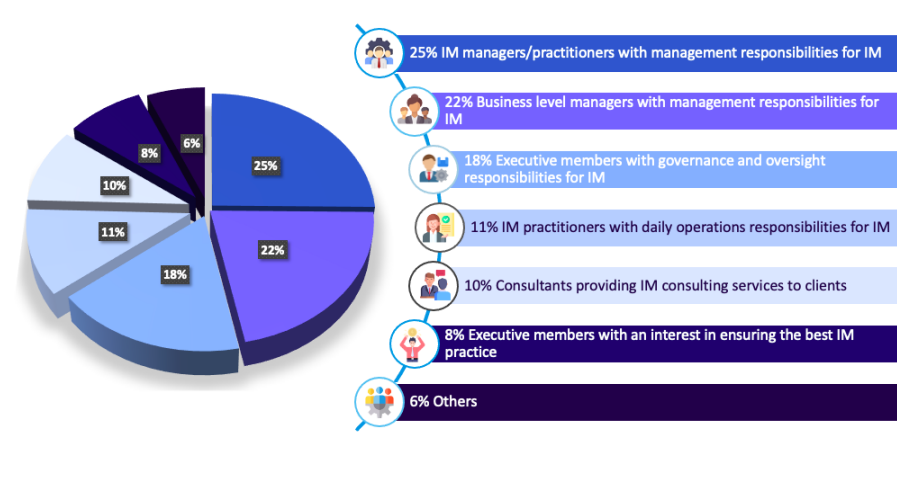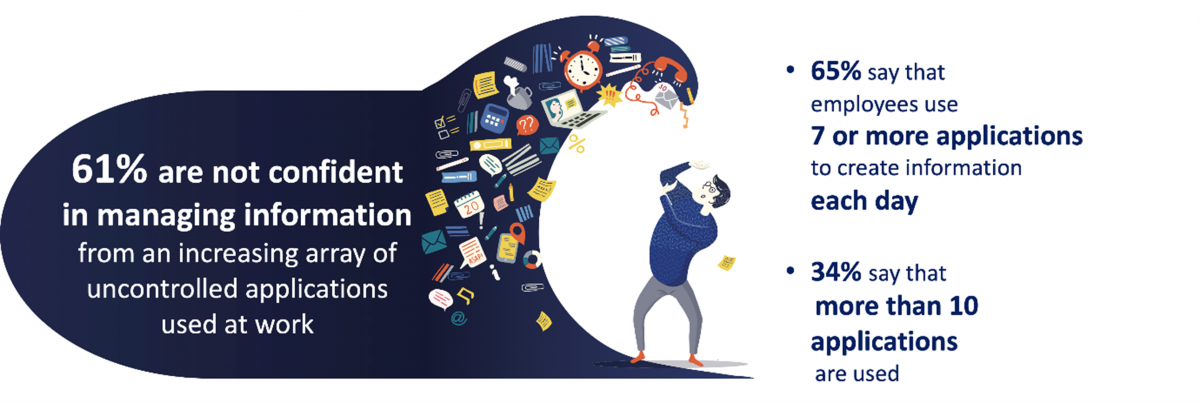Australia faces risk from poor information governance: survey

A new survey undertaken by Swinburne University of Technology and Astral Consulting Services has found that Australian businesses and goverment organisations are at risk due to the overwhelming increase in data that organisations create daily.
More than a third of those surveyed said their organisation’s current progress towards implementing information governance was poor overall, despite 89 per cent of participating organisations recognising the importance of a formal approach to information.
“The last decade has generated more documents and records than any previous decade of human activity,” says co-leader of the project, Swinburne researcher Dr Paul Scifleet.
“Yet, at the same time, these records are seen as less reliable, retrievable and accessible than ever before. The volume of information and the rate of growth is simply too large and rapid to rely on traditional methods of information management.”
Other key findings include:
- 61 per cent of employees are not confident managing the breadth and depth of information available to them
- Nearly two-thirds of employees use seven or more applications every day to create and store information, with more than one-third reporting the use of 10 applications or more.
- 44% of respondent’s organisations are working globally, in environments requiring management of international information flows across borders and across jurisdictions, with 49% working in organisations with more than 1000 employees.
- 35% rated their organisations current progress towards implementing Information Governance as poor.
The survey of over 100 information management professionals is part of a research project to explore how changes to enterprise information management practice can lead change in information governance to meet current and future challenges.
The collaborative research project, supported by a Department of Industry, Science and Resources, Innovations Connection Grant, aims to better understand the changing role of information governance and develop new information management cloud technologies and services for businesses.
Almost half of the respondents from either proprietary or public listed companies and 39% percent of respondents from the public sector. The remaining 13% of respondents represent a mix of not-for-profit and ‘other’organisations, including an independent research institute, a trade union, independent information management consultants and information management consultancies.

Information Management role of respondents.
The survey found discrepancies between Enterprise Information Management (EIM) goal setting and requirements for successful implementation.
- Most respondents rate their organisations as being good and very good in managing vital business information, achieving strategic alignment, and meeting the requirements of assurance and compliance.
- But this is contradicted by responses that rate organisations as being poor and very poor in applying the policies, processes and mechanisms for information capture, control, retention, and use, that are the backbone of EIM and vital business Information Management.
In terms of data management priorities, the survey demonstrates that organisations continue to focus first on managing structured transactional and operational data, records, and information.
82% of respondents rank structured data management for transaction processing systems and operational databases as their greatest priority (either as important or very important), business process management including controlled document management (templates and metadata) was prioritised by 70% of respondents.
Unstructured data management is seen as less important with 52% of respondents rating it as their least important concern.

“The challenges faced in managing and disseminating the ever-increasing volume and complexity of information have never been greater than in today’s highly paced business environments,” says Astral Managing Director Marie Felsbourg.
56% of respondents indicate that the most common approach to integrating IM in office productivity suites is to license and add-on standard features available in their office suite to support information management. 50% of respondents are integrating their office productivity suite with their document, record, and content management systems.
Less common is the application of information architecture for improving the control of vital business information, including applying metadata and classification schemes, automating business rules and workflows for document control, applying functionality to automate classification and action documents created.
“Every business is now a distributed workplace, dependent on information sharing. The communication of data and information is a critical asset, which urgently requires improved management to reduce vulnerabilities, limit exposure to cyber security attacks and ensure business continuity,” Dr Scifleet says.
“It is time to ask new questions about the values, rules and parameters under which information will be managed, and to shift the focus from assurance and compliance to greater accountability, trust and responsibility,”
Download the full report HERE
